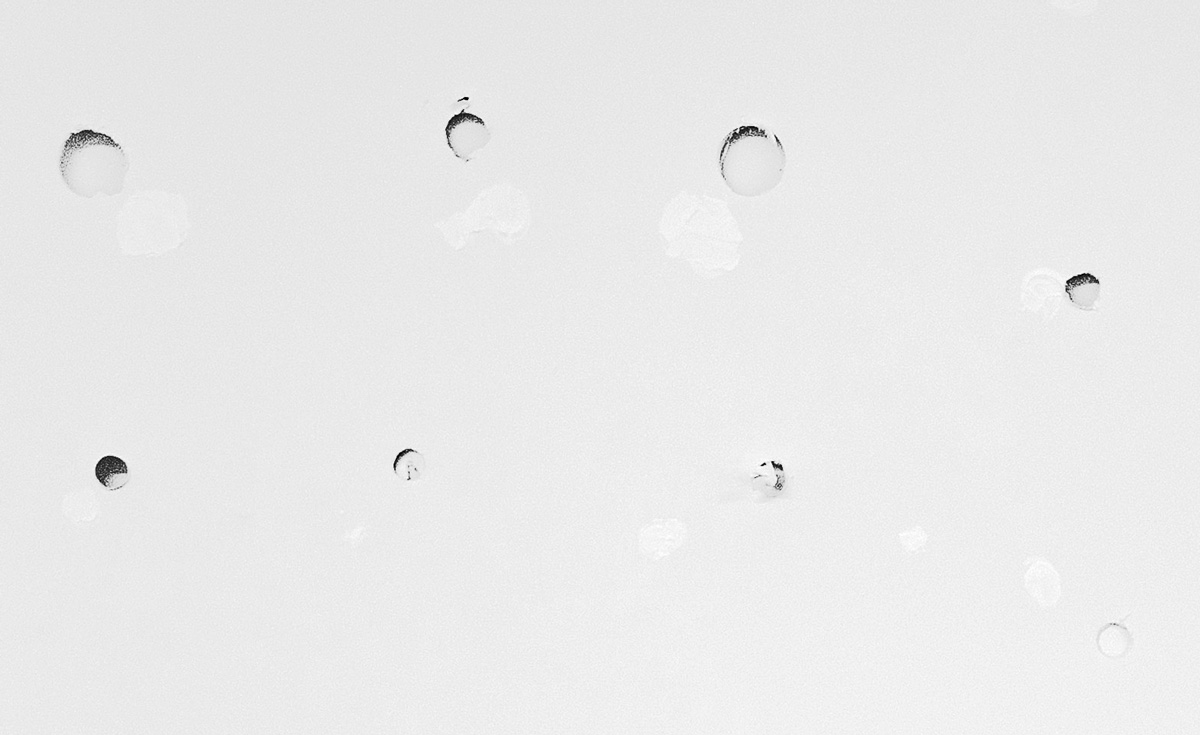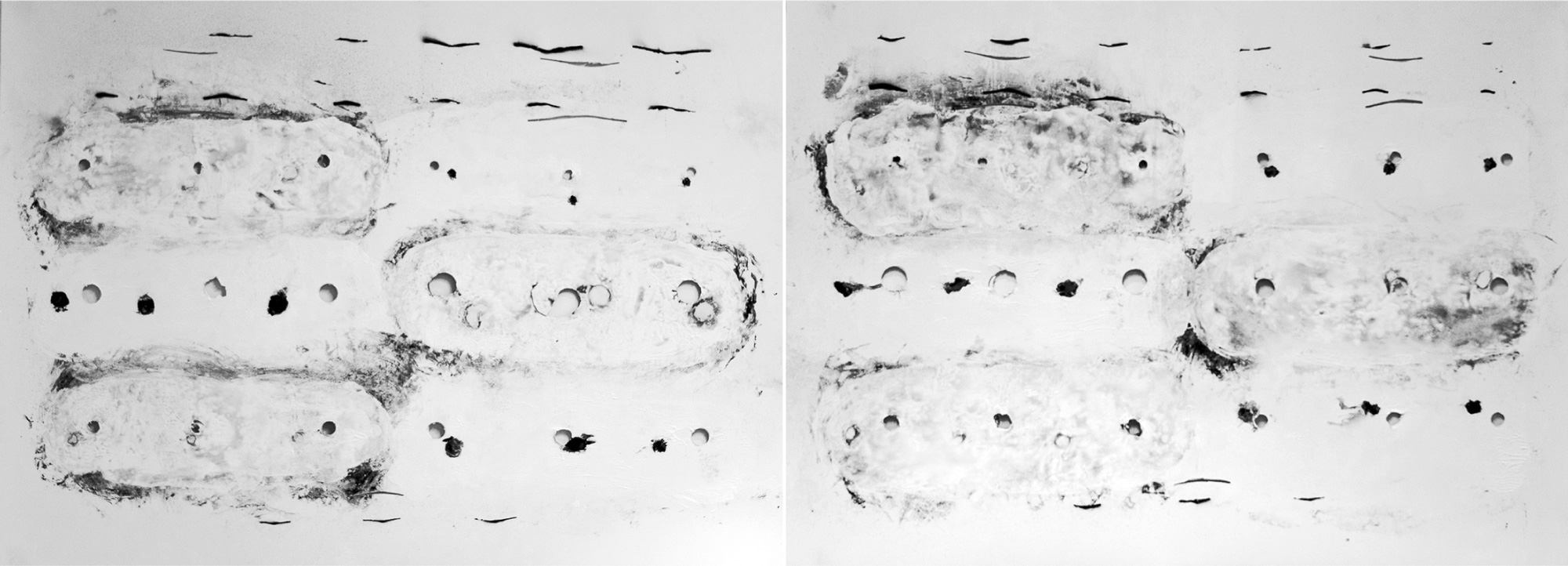This is an attempt to express a classical interpretation of how fundamental particles may have evolved. Also it tries to address some of the principle questions about why certain particles and initial conditions have been favourable for life to evolve while others have not.
I must emphasise that this aesthetic interpretation has not been tested or verified in any way, shape or form (it’s a ‘fruitloopery’ interpretation from a fringe dweller). Nevertheless it is an invitation to think about what fundamentally cannot be actually directly observed – a quantum particle (not yet anyhow). Therefore the aim is to provide a platform for a visual dialogue that postulates current particle physicists theories, so that we may then have a tactile understanding of their thinking and subsequent discoveries. Afterall, developing bite-size visual queues is a particularly humanistic quality beneficial for understanding our world and each other. Without that, the practical implications may not be as readily realised.
At the same time, this is an extension into the art practice I call, Membrane Art — that is, how geometric curves provide the framework for events to manifest and evolve, yet the flat picture plan is an agent of how we observe them — necessary to help us analyse and contemplate what has happened.
I trust that with further understandings this aesthetic practice will evolve and be further enhanced in time.
_ _
The building blocks of matter are made up of two kinds of brushstroke expressions:
- Quark brushstrokes
: Quarks are represented by drill holes created on a particular kind of curl (strong interactions) — a quark is a tiny particle which makes up protons and neutrons.
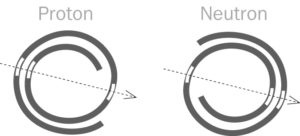
- Electron brushstrokes: Electrons (leptons) are represented by saw cuts created on a wavy surface (electromagnetic interactions).
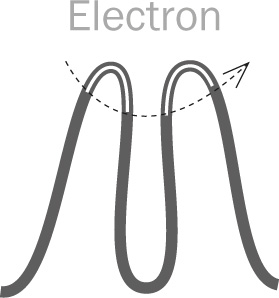
Whichever brushstroke expression is used the similarities to the way a brushstroke mark is made on a flat plane remains the same — there is initial contact, movement across and then an exit off the surface.
Note: The saw cuts and drill holes are vector spaces left behind within the field and not the particles themselves. That eventuates as a consequence of it.
Quark brushstroke
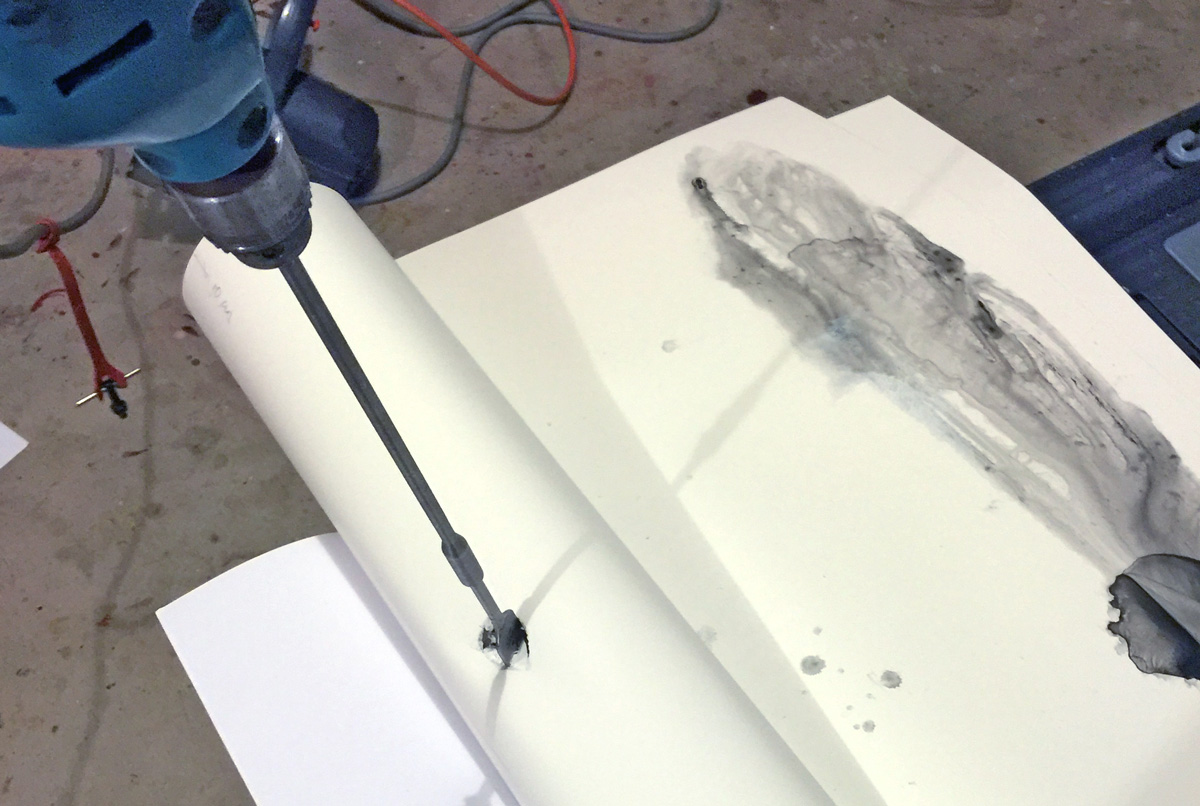

Favourable curled structures
The curled membrane represents the geometry of the strong field needed to create the particles that interact with it. The drill holes produced on this curvature structure is similar to the way a brushstroke mark is made on a flat plane – there is initial contact, movement across and then an exit off the surface.
Strong interactions
1: This side view of a curled membrane represents how strong interactions are created. One drill hole can express a multiple flavours of quarks. When entry occurs at the point where two convex surfaces are close together and the exited point is a concave structure – a proton is created (two up / one down).
2: If the curl is spun 180° (half spin) then a different set of events occur. When entry occurs at one convex structure and the exit point is at two concave structures that are close together – a neutron is created (two down / one up).
3: Flat view: The aesthetic is realised when the membrane is opened out and the depth is compressed. Nothing disappears, it just changes form. This generates the human visual experience, a metaphor for how we perceive.
Working hypothesis
Quarks eventuate out of the six different spacial geometries as shown above (3 proton-style quarks, 3 neutron-style quarks). In practice, however, vector fields that holds the quarks are often malformed at the time of creation. It doesn’t matter that the same drill-bit size was used to cut through all the various curvature constructs, you can expect variations to size to occur. Whether or not this is due to the condition of the tool used, extra debris or other surface conditions allows for a multitude of variations to manifest. Nature is fickle, so if quarks are created in this way then you can expect that given time (billions of years or so) decay or other high entropy processes may then ‘clean up’ the vector spaces to allow for a more full-bodied quark type to evolve and become favourable for atom formation.
Electron brushstroke
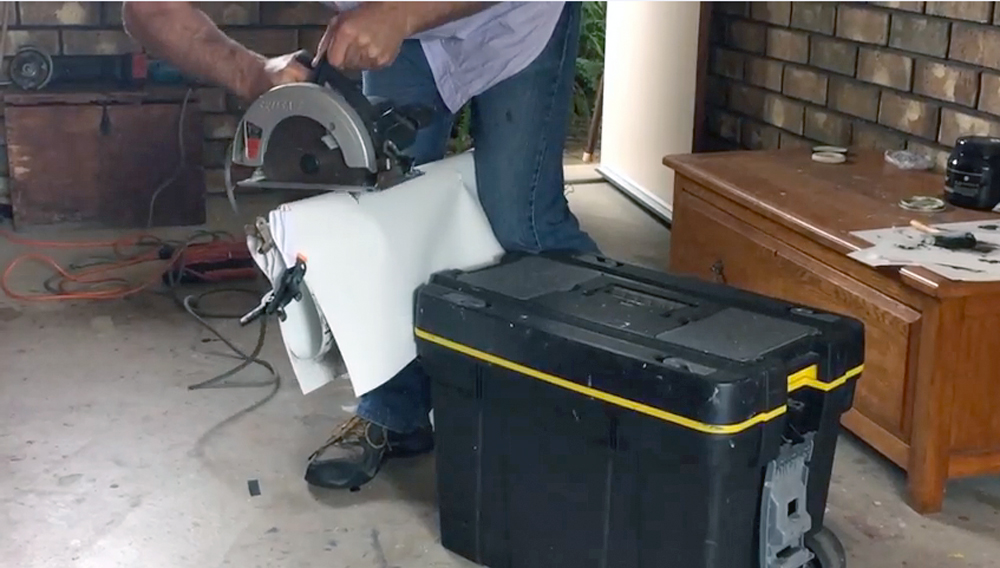

Favourable wave structures
The wave membrane represents the geometry of the electromagnetic field needed to create the particles that interact with it. The saw cuts on this curvature structure is similar to the way a brushstroke mark is made on a flat plane – there is initial contact, movement across and then an exit off the surface.
Electro/magnetic interactions
1: This side view of a wave membrane represents the electromagnetic field. The geometric relationship creates ‘hidden’ structures for the work.
2: This shows how one expression (a cut made by the circular saw) can appear to be in two places at the same time.
3: Flat view: The aesthetic is realised when the depth is compressed. Nothing disappears – it just changes form. This generates the human visual experience, a metaphor for how we perceive.
Working hypothesis
The saw cuts and drill holes are vectors created within the field and don’t necessarily represent the particles themselves. Smaller sedimentary-style matter (strings) may fill the void left behind to create the so-called elementary particle. In practice, for entangled (networks) to occur, electron brushstrokes by default might contain more parts or substructures then the ones we know. For example, the bottom fold which contains no cut, is still a part of the overall structure. It creates the visual connection (distance) between two saw cut expressions when we observe them on the flat plane.
I have not considered the scale differences between leptons and quarks in the development of this work. Curled structures might have eventuated before wave structures. They may simply be a by-product of curled up ones.
Creating atoms (protons, neutrons, electrons)
with second phase dimensions
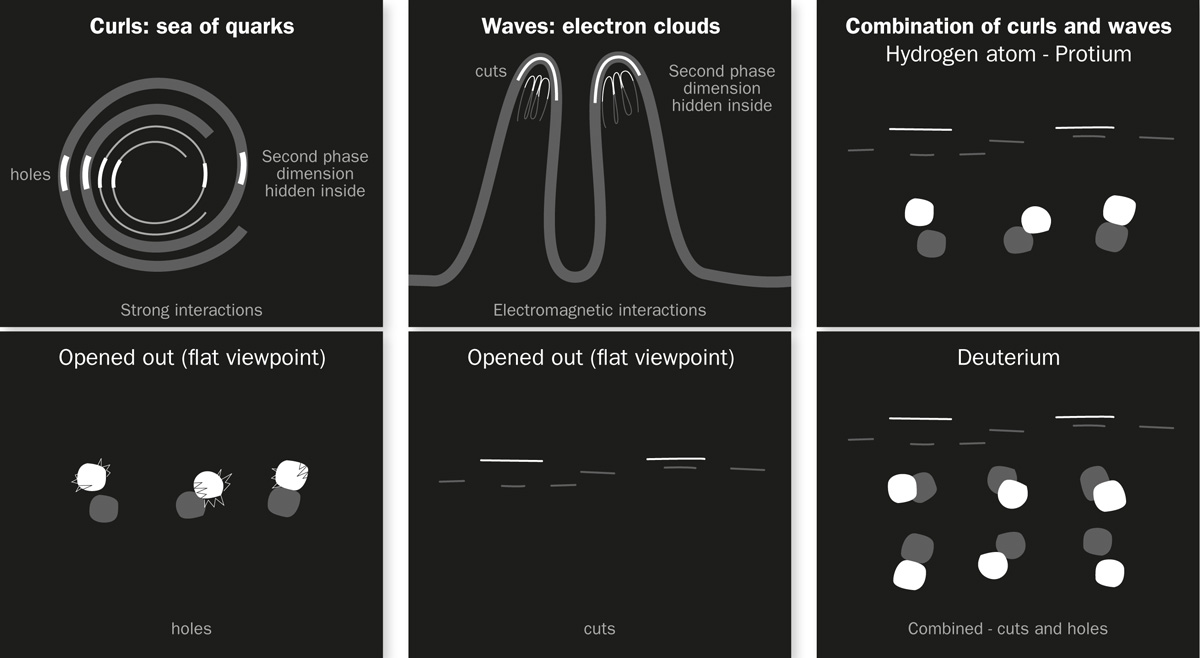
Favourable particles
We can now use both drill holes and saw cuts to create vectors and other interactions on the surface of the membranes. To create entangled (networks) a second phase dimension is hidden within the geometry of the curvature constructs at the time of creation. In practice, this second phase dimension must be large enough so that it can be held in place by the outer dimension at the time of creation — too small, it misses, rolls around inside and remains unconnected.
1: This electron was created with additional hidden structures (phase dimension) to express a ‘cloud of electrons’ that are entangled as one expression as seen on the opened out perspective.
2: Multiple quarks can be created with additional hidden structures (phase dimension) to express a ‘sea of quarks’ that are entangled (networked) as one expression as shown on the opened out perspective.
3: Flat viewpoint – all sorts of expressive combinations can be created with quantum brushstrokes that relate to fundamental particle formations. Yet the flat picture plane is necessary to help us analyse and contemplate what has happened.
Working hypothesis
If the same size drill-bit and saw blade is used to cut through all phase dimensions then it could be that the hidden dimensions is as large (possibly tighter and more fragile) then the dimensions we know. For entanglement to occur, particles by default must clump together to form stable groups. So when smaller sedimentary-style matter (strings) fill the space left behind they may entangle with all phase dimensions as one expression.
For more see:
Visual entanglement
FutureSpace Gallery
RiAus, 55 Exchange Place
Adelaide SA 5000
10am to 5pm, Monday to Friday
on until 3 June 2016

